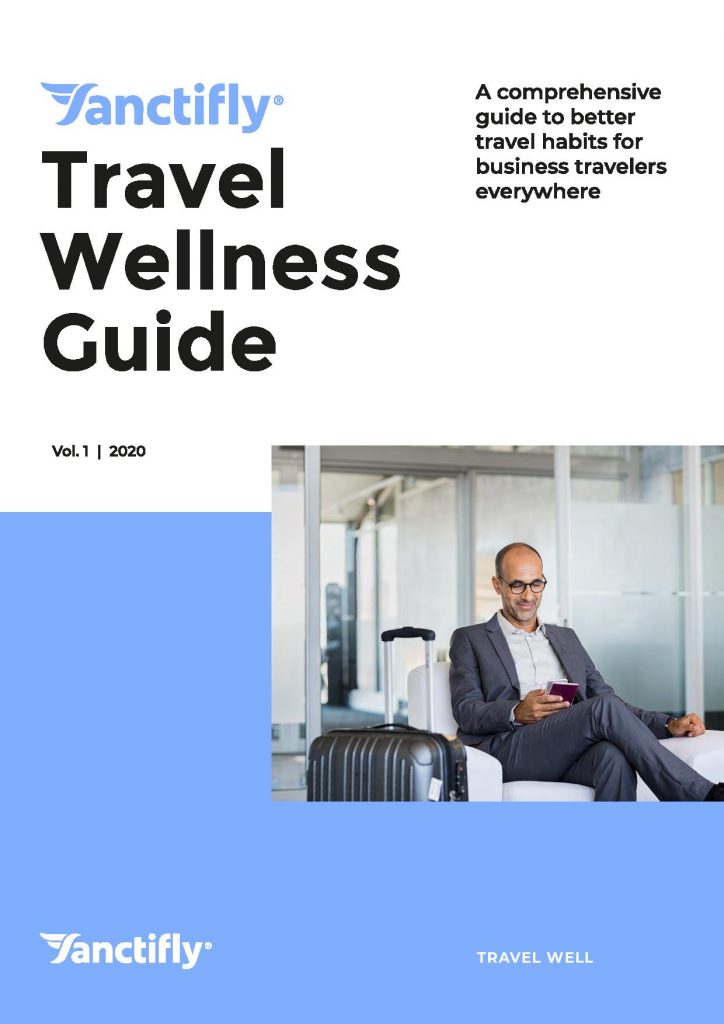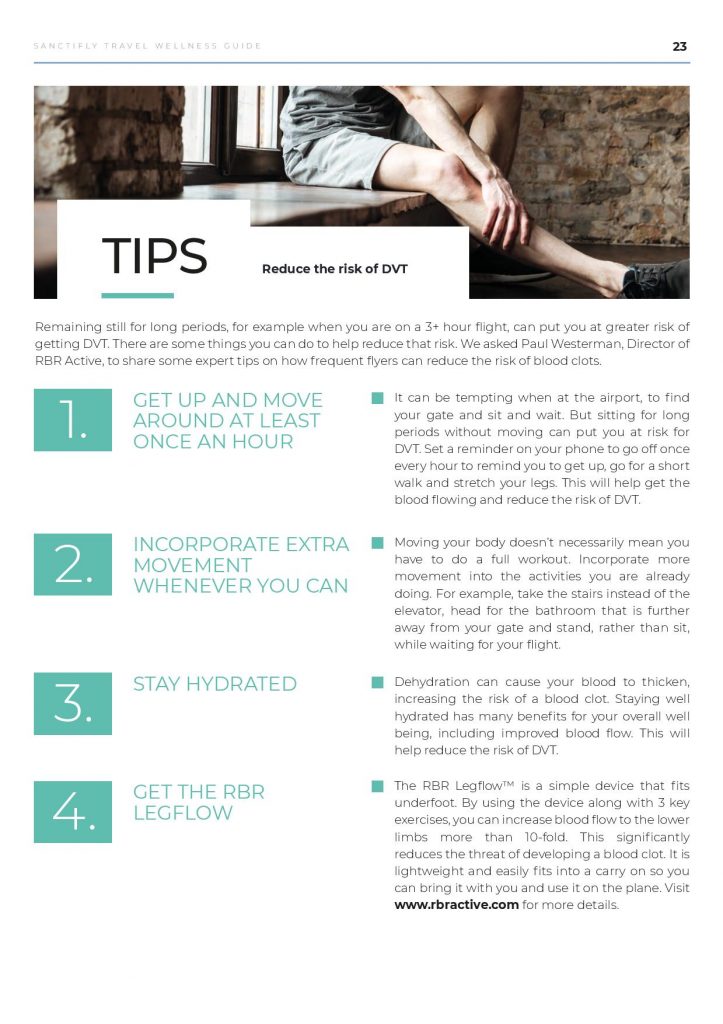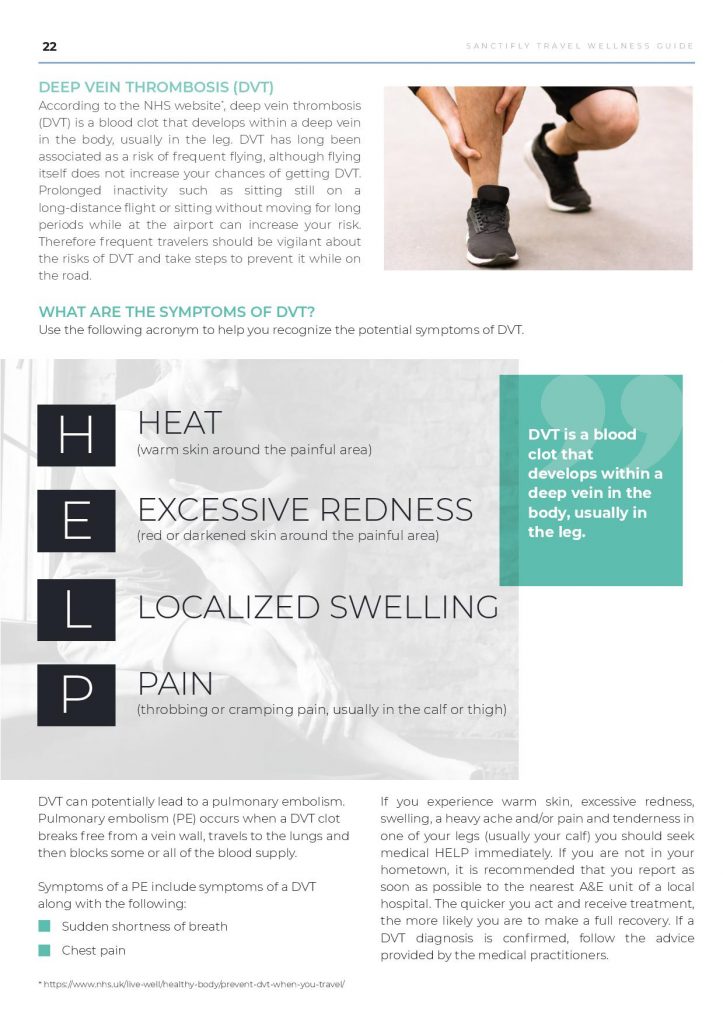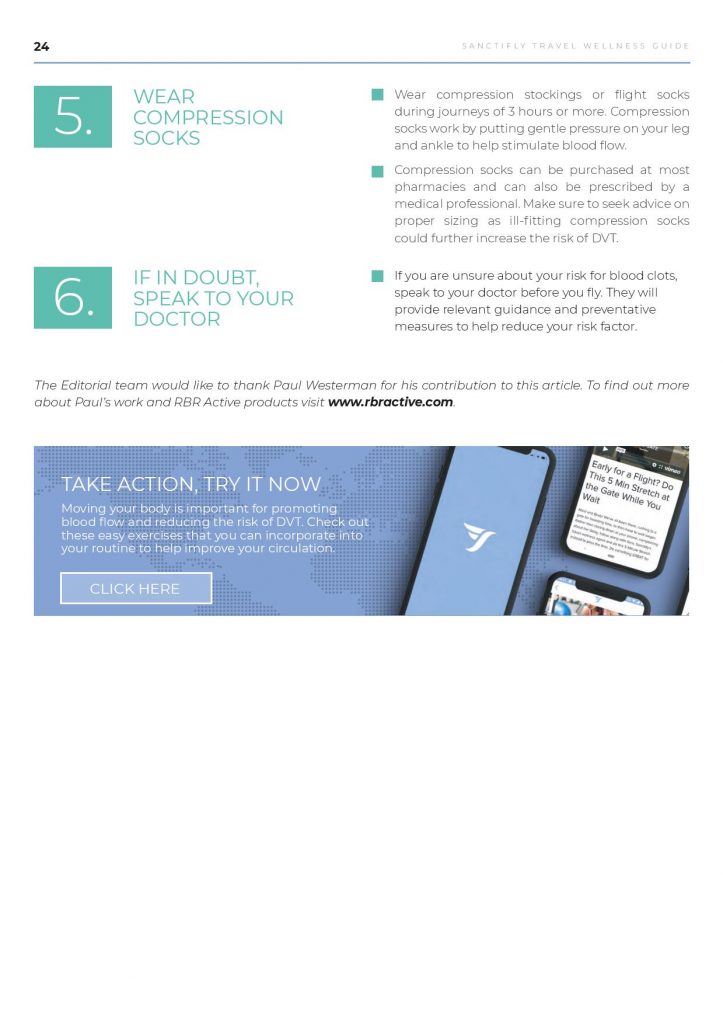A comprehensive guide to better travel habits for business travellers everywhere.
As businesses start to reintroduce their business travel programmes, has anything changed in relation to the welfare of the passengers or with regards to their wellbeing being shown by their employers?
The airlines themselves have put into place COVID-19 regulations to do what they can to reduce the potential threat the virus offers. But, a potentially greater risk is still, sadly, not being fully addressed by the airline industry, business travel organisations or the businesses who send their staff off out around the globe.
RBR Active™ have recently worked with leading travel welfare and wellness publication from Sanctifly, who’ve put together a comprehensive guide to better travel habits. We were asked to contribute a thought piece for business travellers and what they, their employers, the travel organisers and the airlines should be looking to incorporate within the culture of their company to truly support their travel wellbeing.
The belief that flying is the main cause for individuals developing potentially life-threatening blood clots, is nothing more than a myth. Clinical research by our colleague; Professor Richard Beasley (of the Medical Research Institute of New Zealand) concluded that whilst an individual is sedentary (for a mere 90 minutes) blood flow to the lower limbs has decreased by over 50%. This reduction in blood flow greatly increases the threat of a Deep Vein Thrombosis (DVT) being formed.
Over the last 60 years, air travel has become the predominant means by which passengers undertake long distance travel. It is estimated that more than 4.3 billion people will have travelled by plane in 2018 – a 101% increase since 2006.
With the exception of the now discontinued Concorde, there has been little change in the basic design of commercial aircraft since the widespread introduction of jet propulsion 40 years ago.
As a result, the anticipated reduction in flight times has not occurred and in fact, new technology has been utilised to develop ultra-long-distance sectors of up to 19 hours duration. Additionally, commercial influences have forced airlines to maximise carrying capacity by dramatically reducing the leg space available.
Where does this leave the business traveller? Duty of care doesn’t stop once a colleague leaves the office. This has been dramatically highlighted in recent months as more and more employers started working from home or were furloughed because of the COVID-19 pandemic. Many employers took responsibility for ensuring staff had the right chair, desk and screen so as to work efficiently. However after research by RBR Active™ it was shown that not a single FTSE 250 leading company took into consideration the even greater risk of their employee’s safety from Thrombosis.
Working in an office, we’re all (slightly) more likely to get up and move around; whether it’s to the photo copier, to chat to a colleague about a project, or just to have a break during the day. However, the majority of people we spoke to admitted that whilst working from home they regularly worked longer hours sat at their desk. In some instances, many were sedentary for well over 5 hours.
Employers have a duty of care for all of their staff, and this extends to business travel as well as working from home. The lack of empathy shown amongst the leading HR Directors is quite shocking. Just because “it hasn’t happened before”, is absolutely not a valued professional position to take.
Imagine the legal implications that a company would be facing should one of their senior executives develop a DVT that results in a deadly Pulmonary Embolism (PE). The first question would quite simply be; “what did your company do to ensure the welfare and duty of care of your ex colleague during the business trip?”
So, what can be done?
Graduated Compression Stockings? Flight socks are one possible easy fix. However, recent medical research by the Imperial College NHS (London) concludes that compression stockings have no clinical or medical benefit in the reduction of the threat of the user developing a deadly blood clot. In fact, research shows that in over 85% of cases, the user in fact causes more harm than any (previously assumed) benefit, as more than often the flight socks are fitted incorrectly, not used in accordance with the instructions, don’t fit correctly or are basically worthless.
Get up and move around during the flight? In an ideal world this would be one of the most natural solutions. But let’s be honest here, who does this? Are airlines able to actively encourage this? The truth is passengers stay seated for the duration of the flight. They don’t wish to disrupt passengers nearby or to get in the way of the air crew as they perform their roles on-board.
The RBR Legflow™ has been clinically researched by a leading expert within respiratory and thrombotic medicine, it has been independently clinically trialled, and is proven to increase the blood flow to the lower limbs of the user over 10-fold (whilst being sedentary). This increase in blood flow significantly reduces the threat of the user developing a DVT.
So, let’s look at the scenario with a real-life mind-set. The employers offer their travelling staff a simple, light weight, antimicrobial DVT prevention device for their travels and work environment. This simple act of consideration and awareness of the threats that are real, is such a powerful message that they actively take their duty of care for their staff seriously and proactively act on this legal requirement. Quite simply, wouldn’t this simple act be a great way to maintain staff retention, as well as being a bright positive beacon to future employees, as well as making the company stand out from all competitors?



